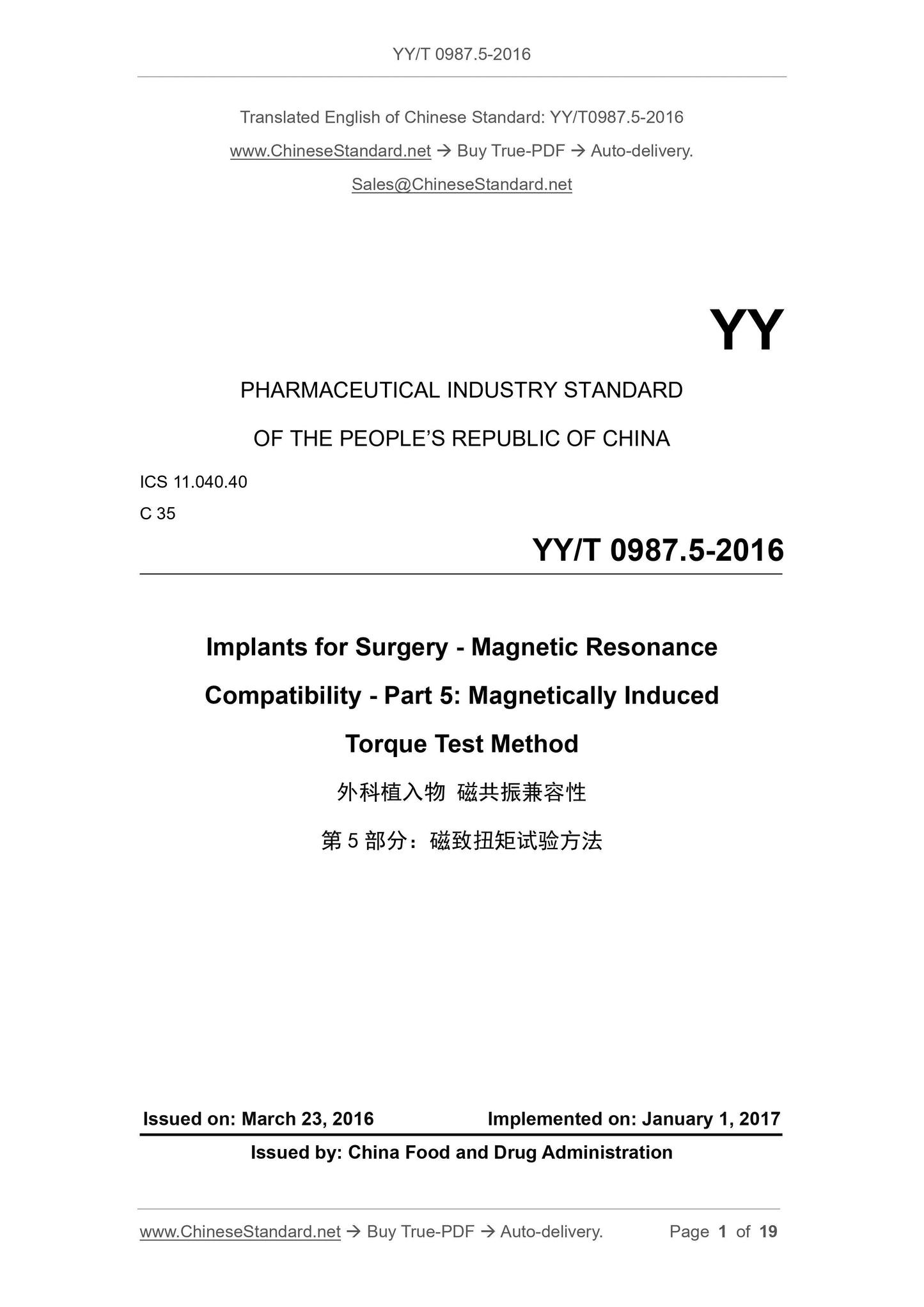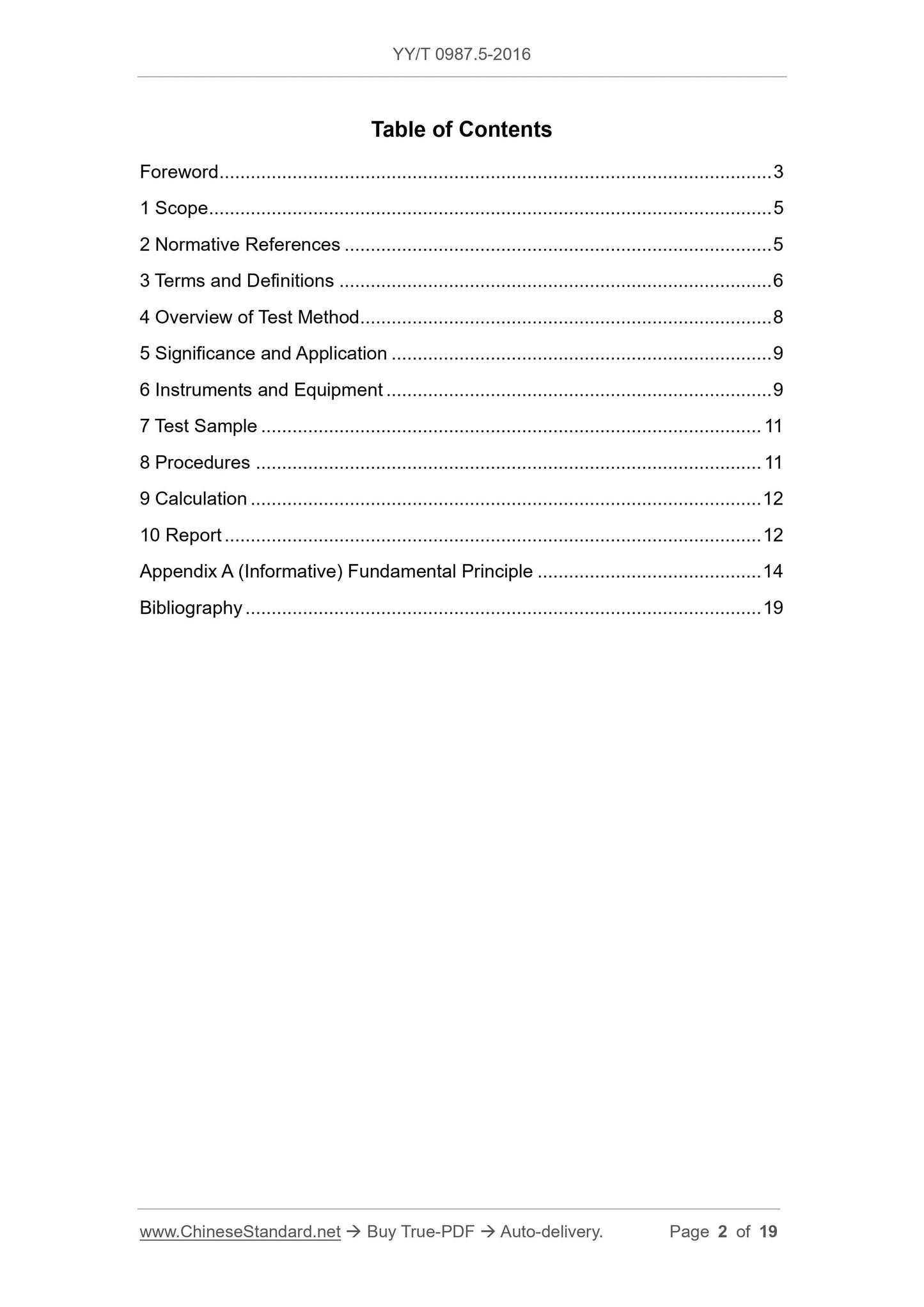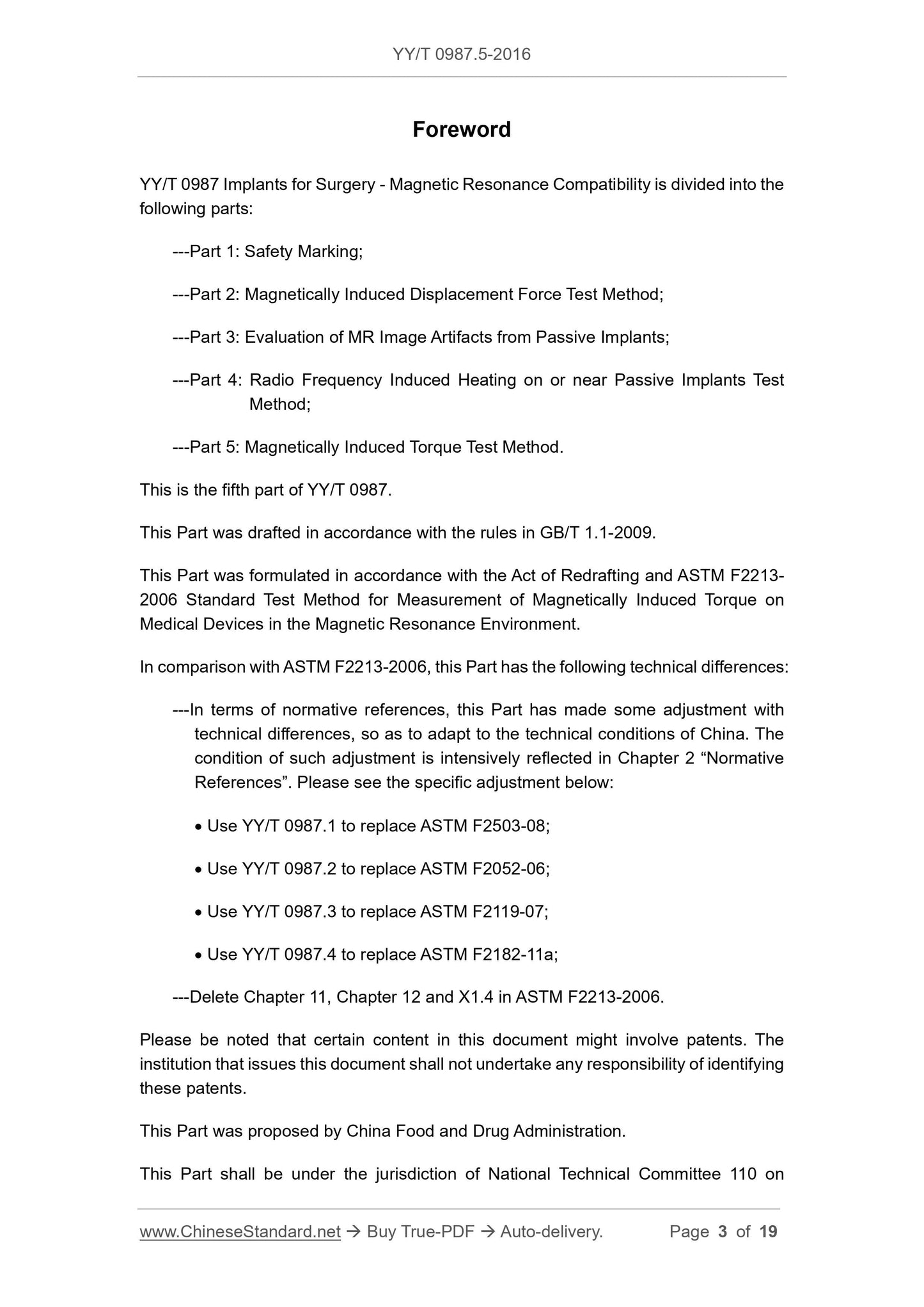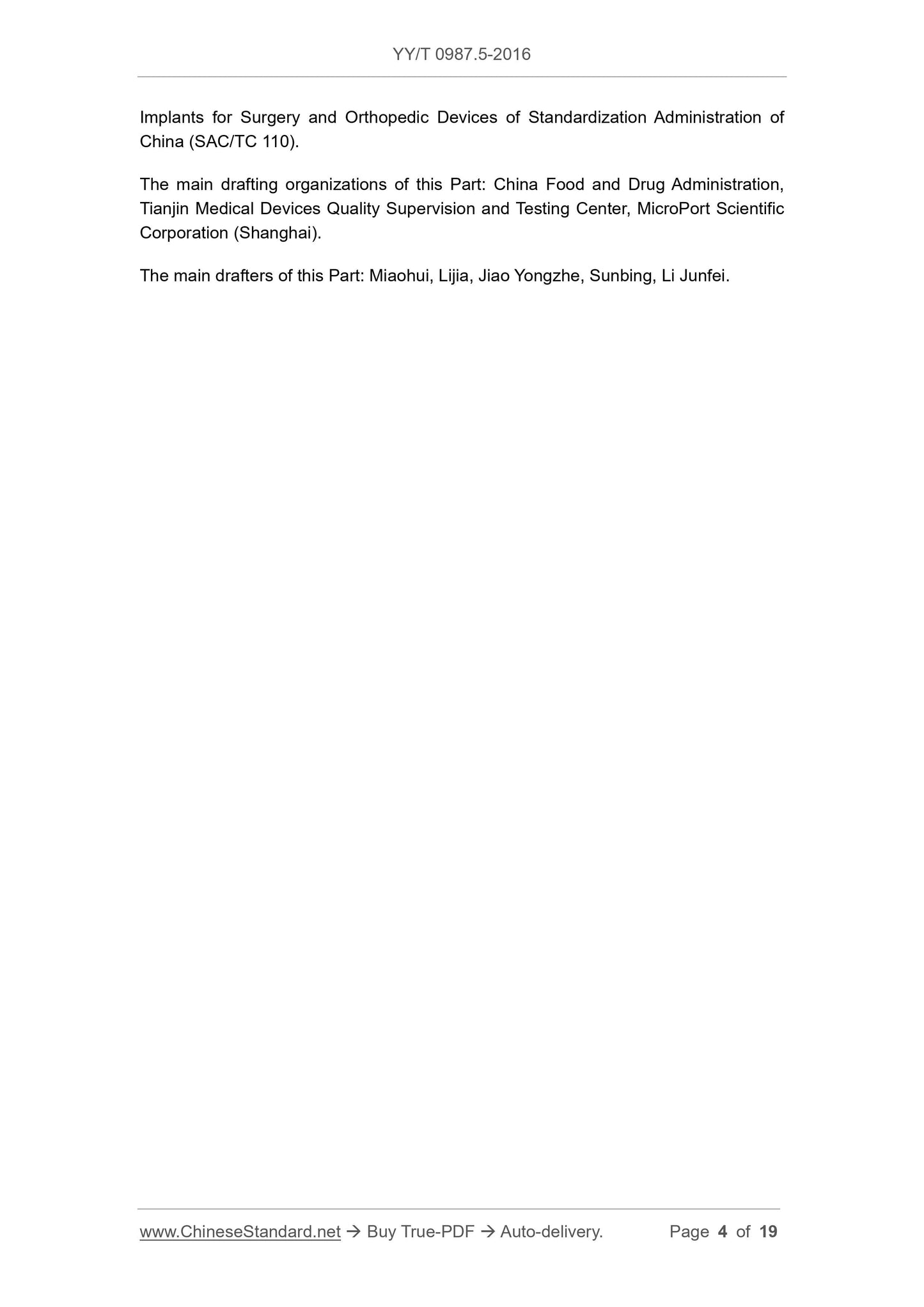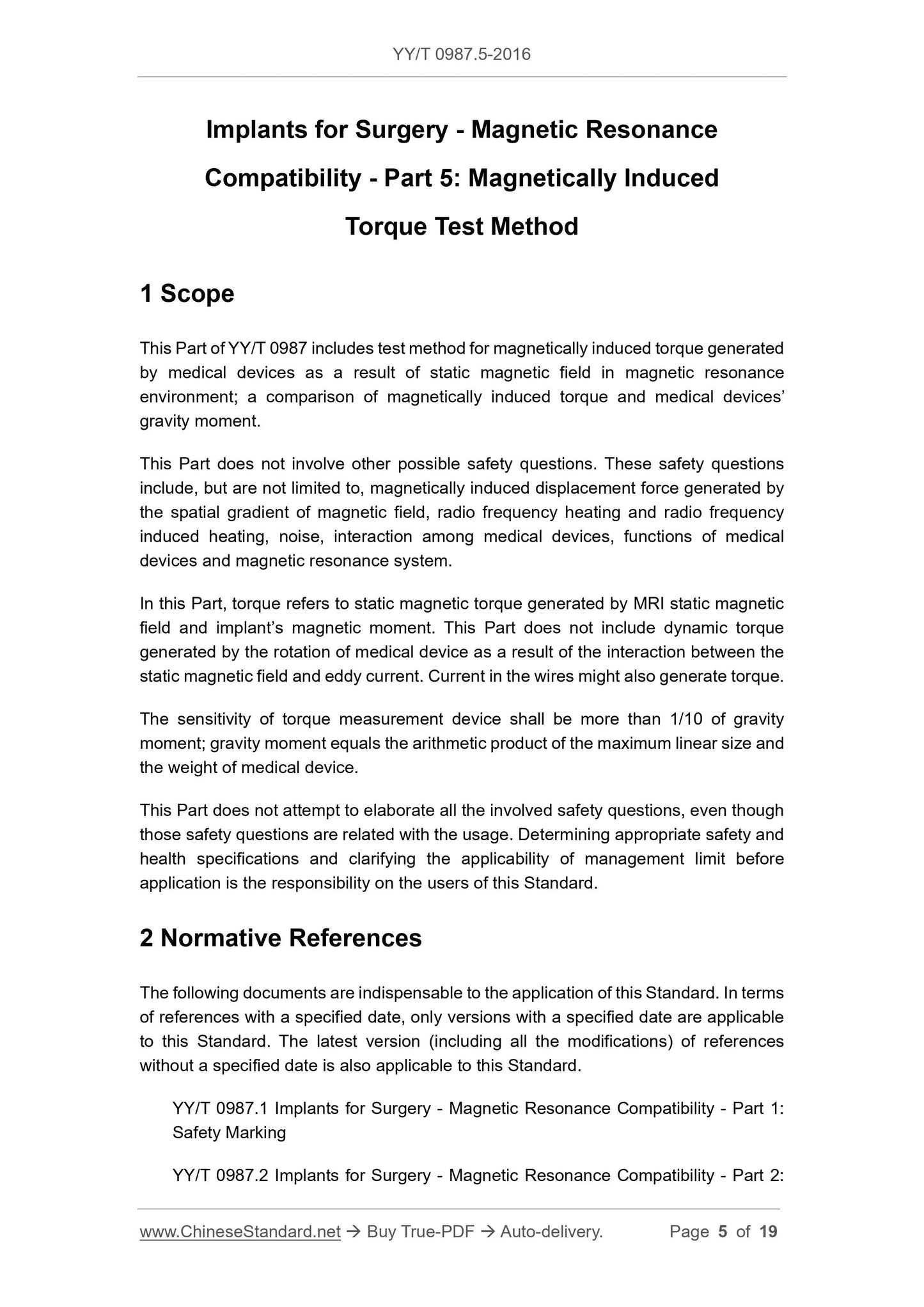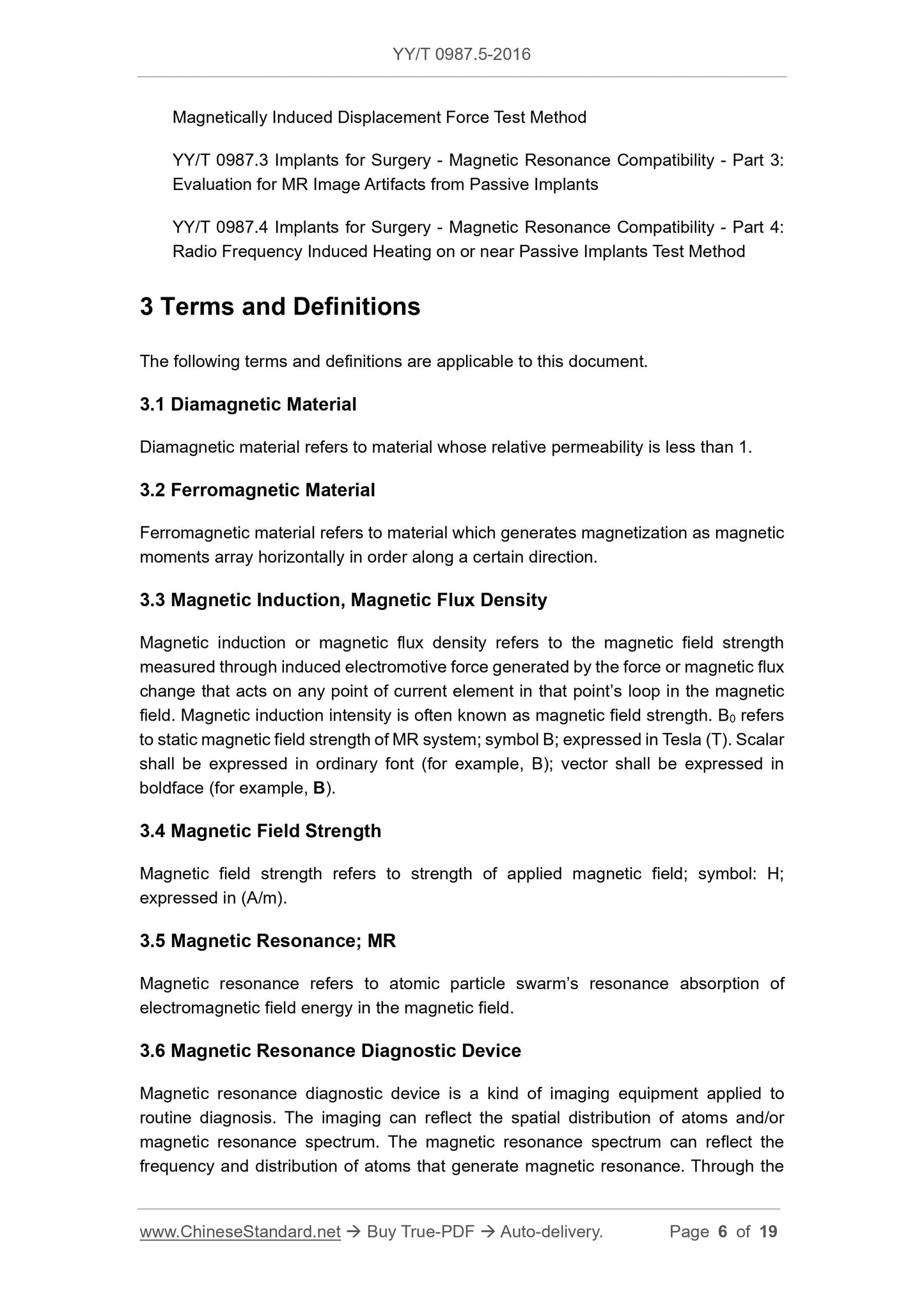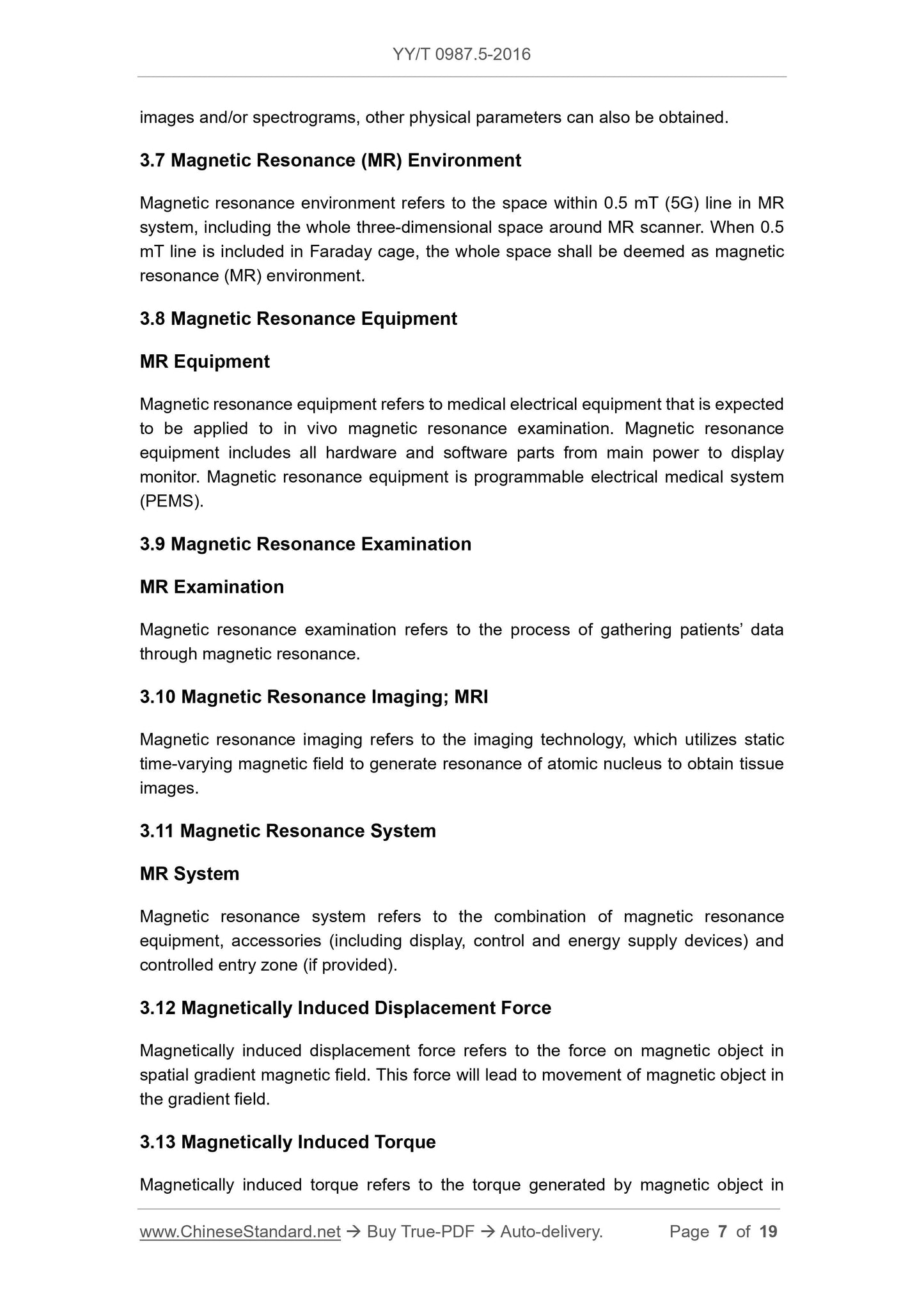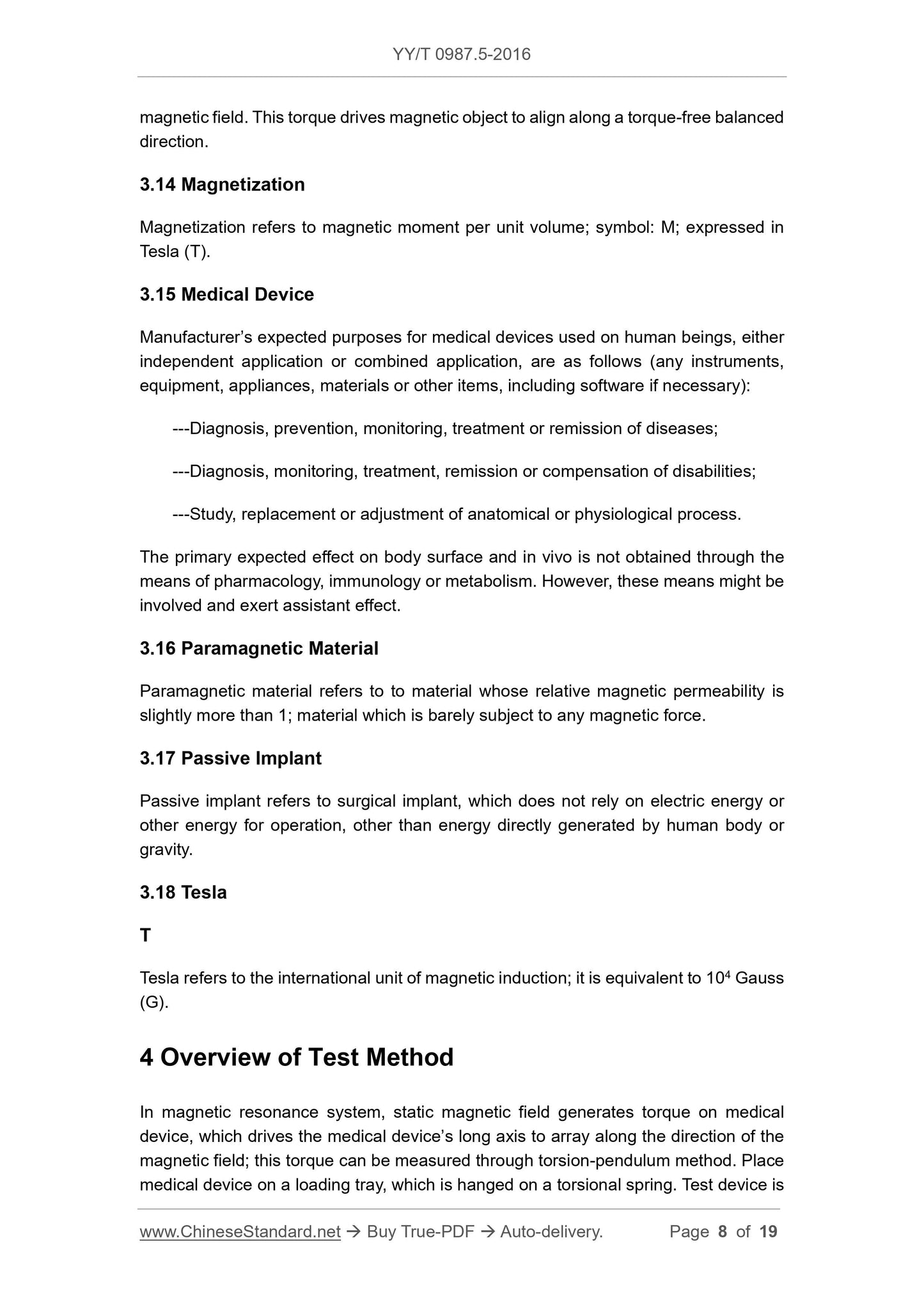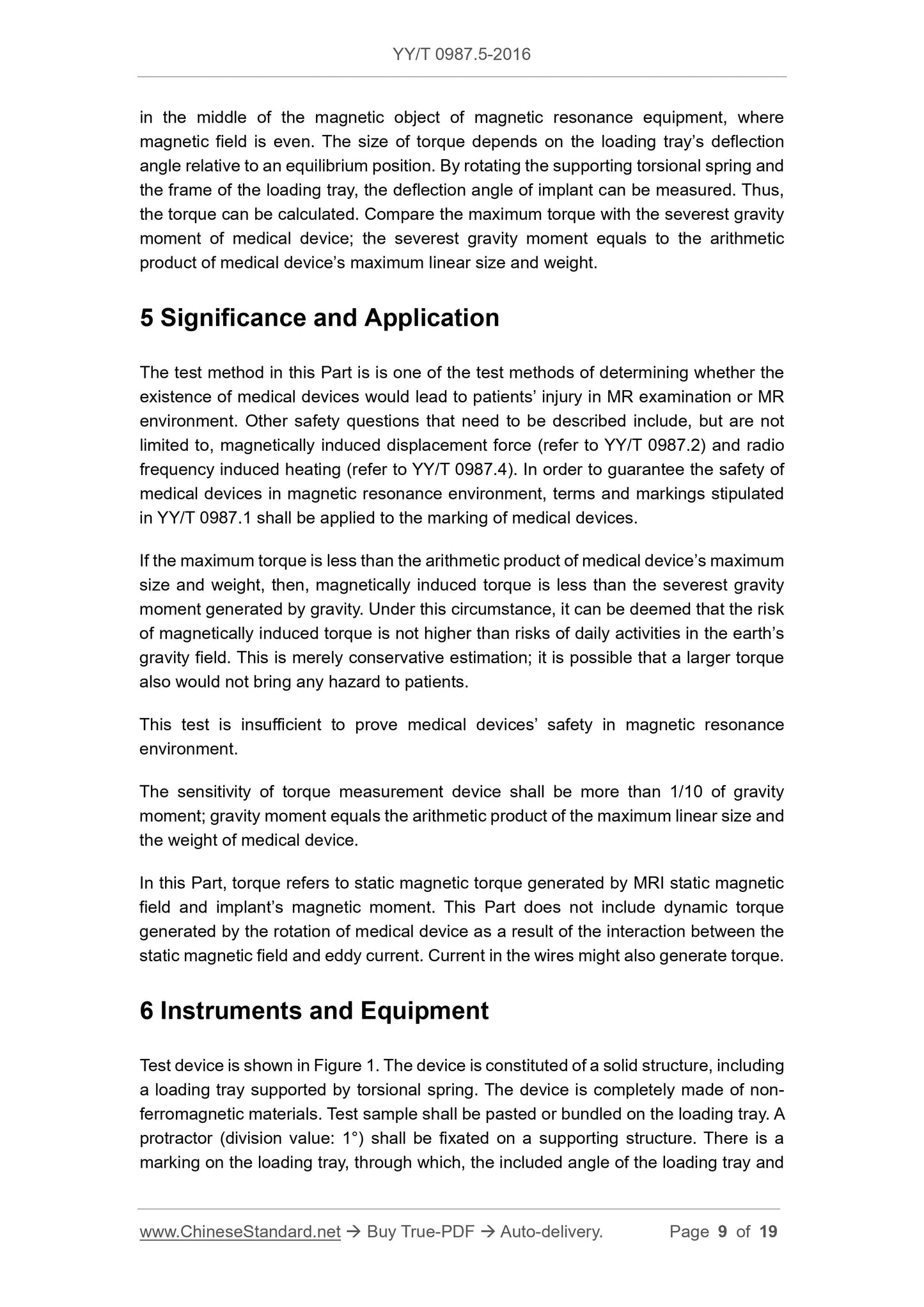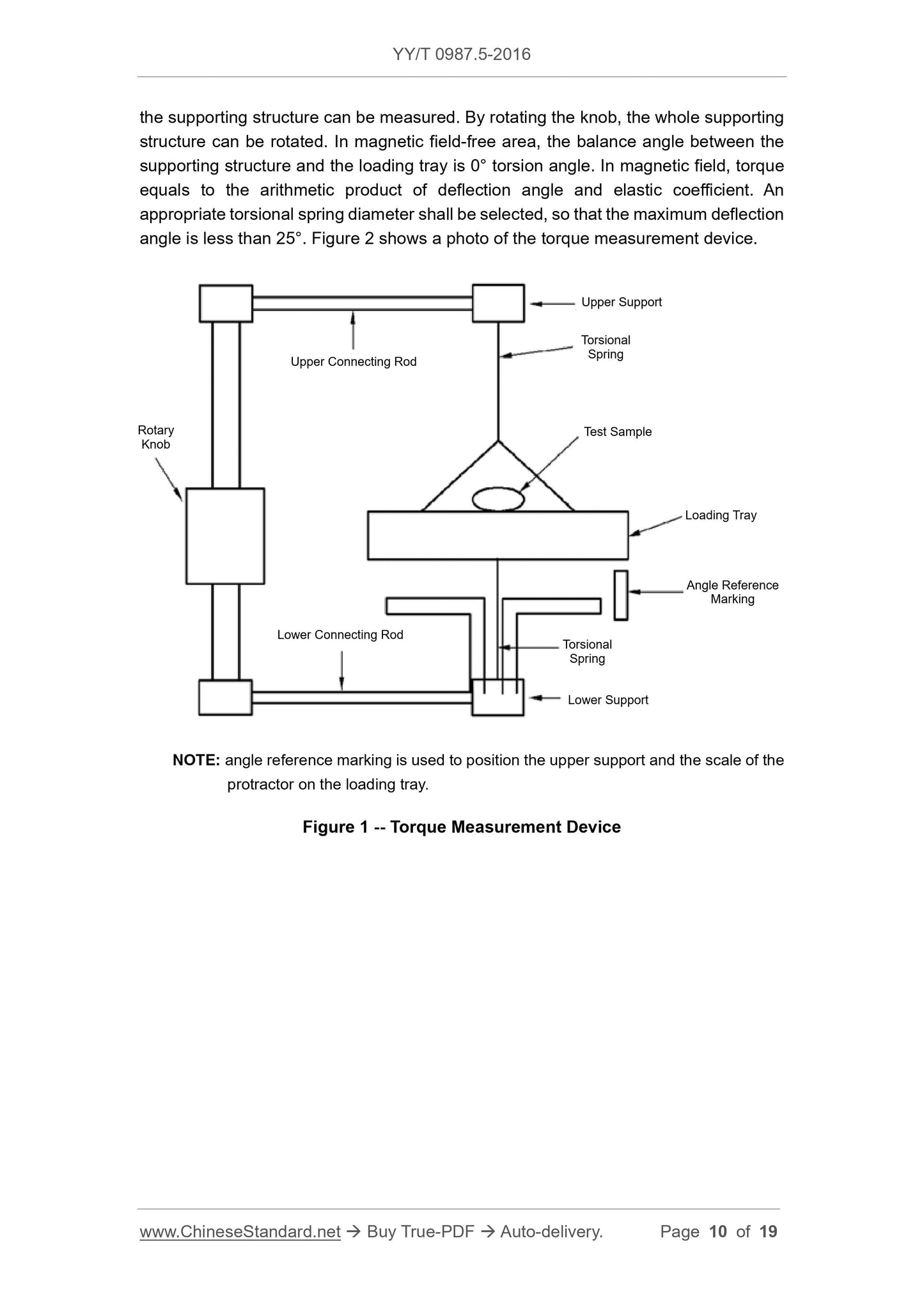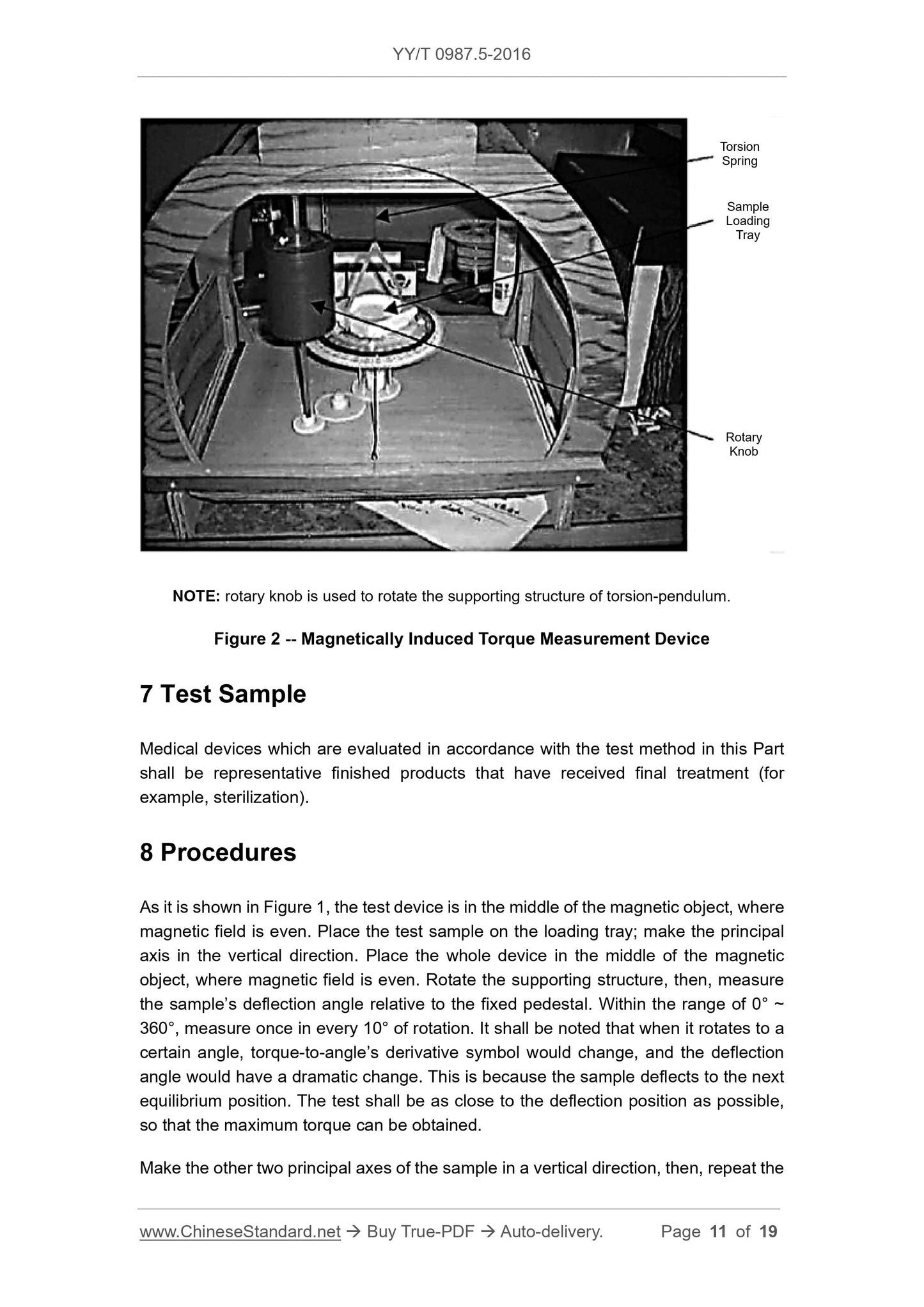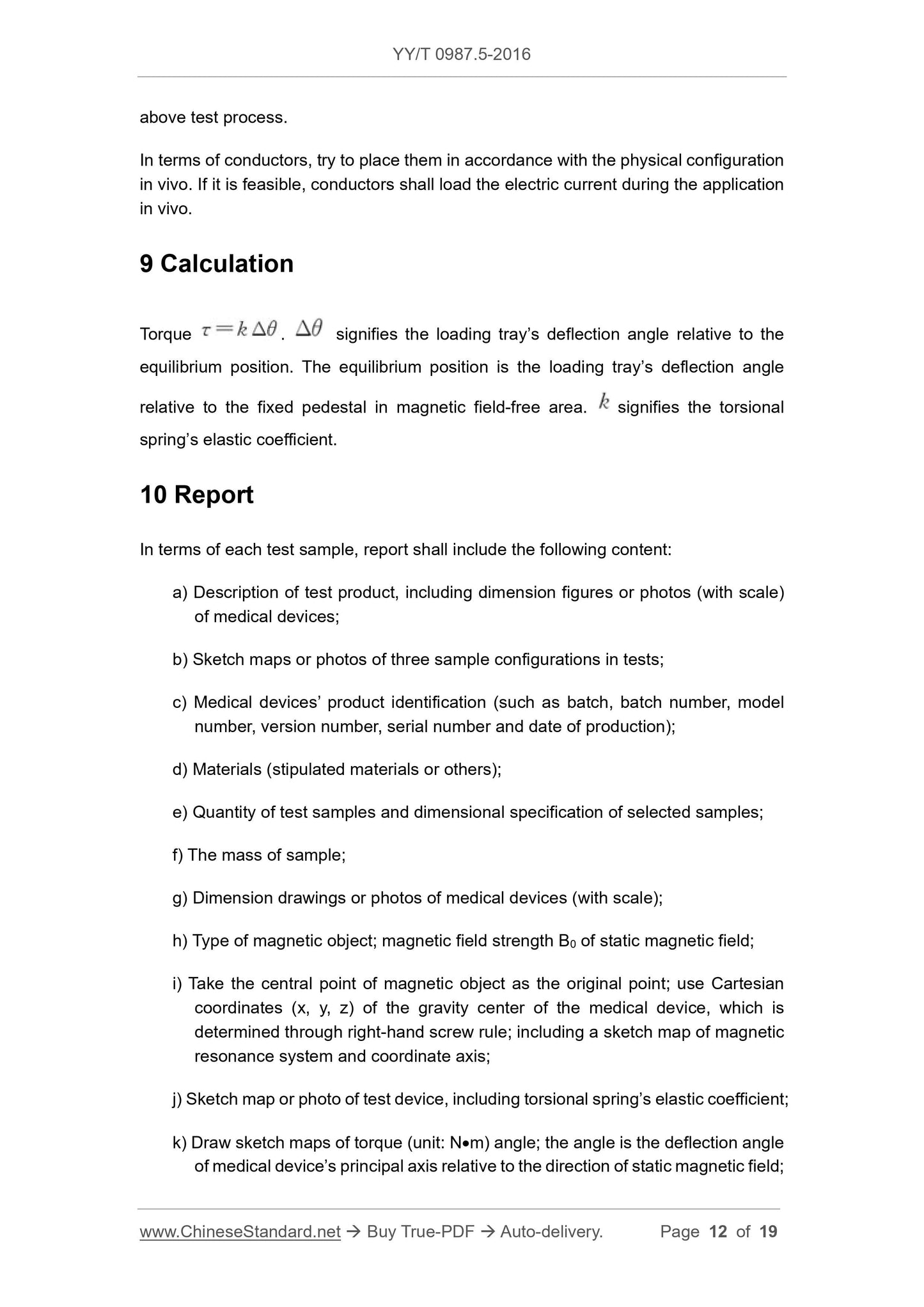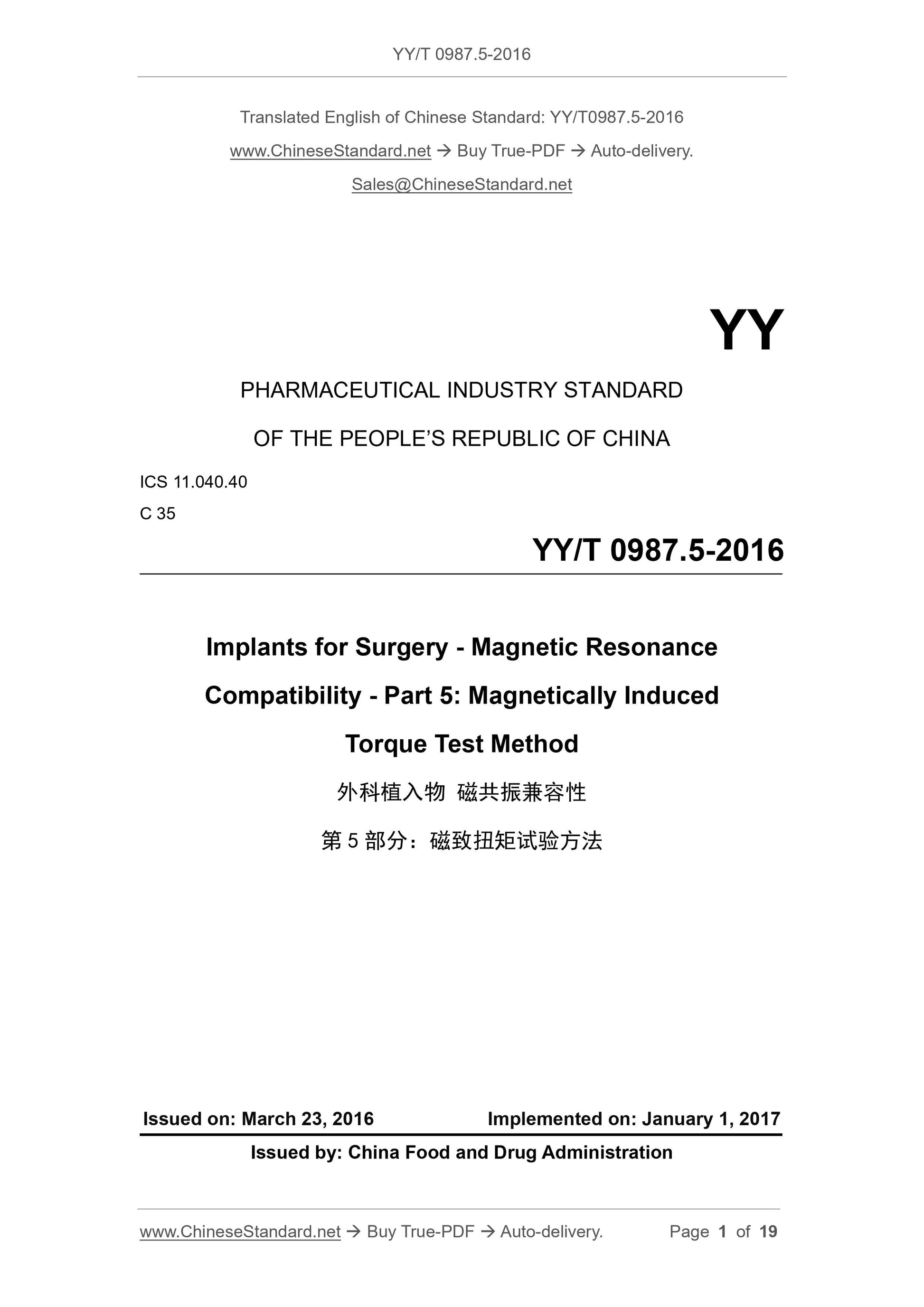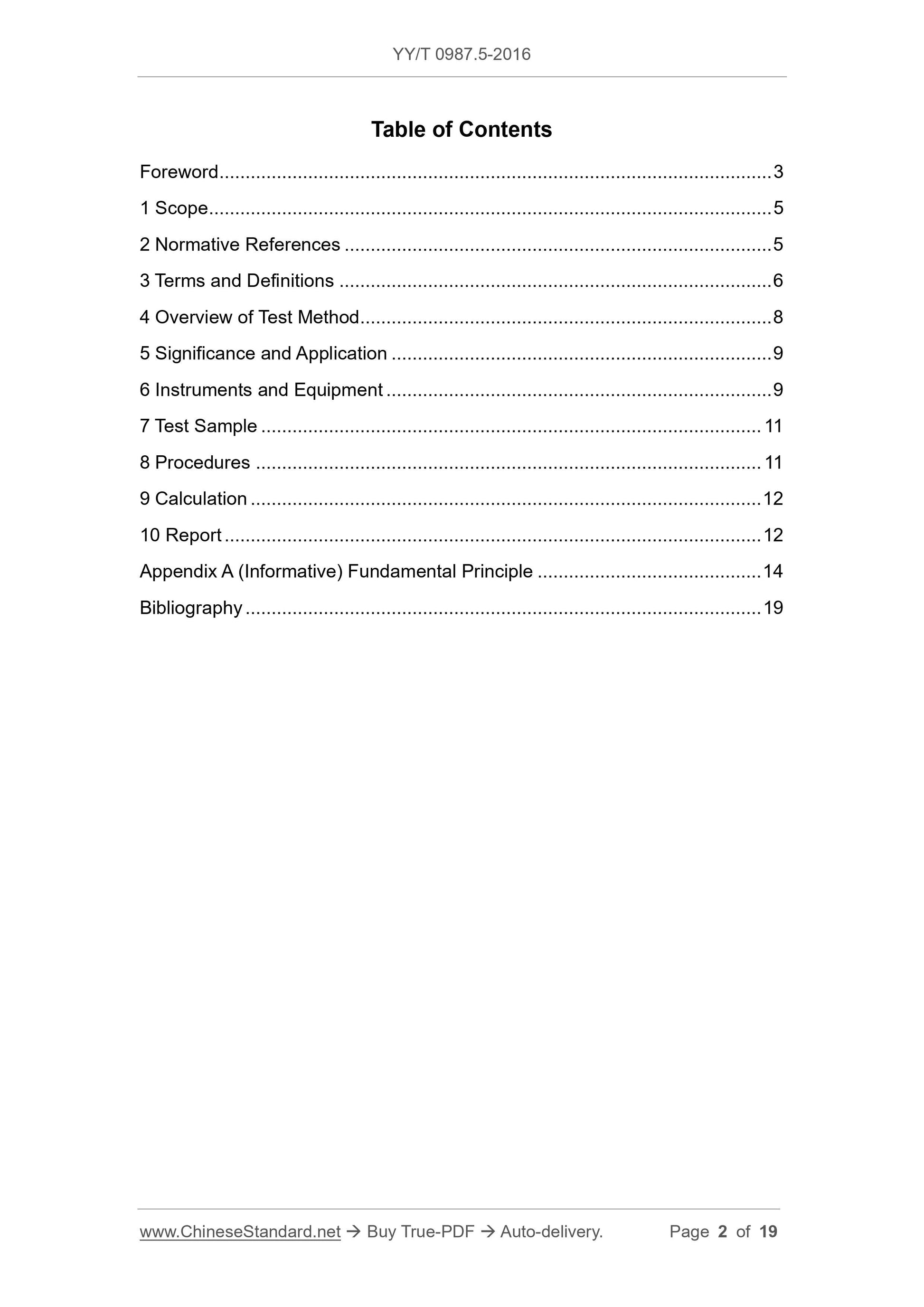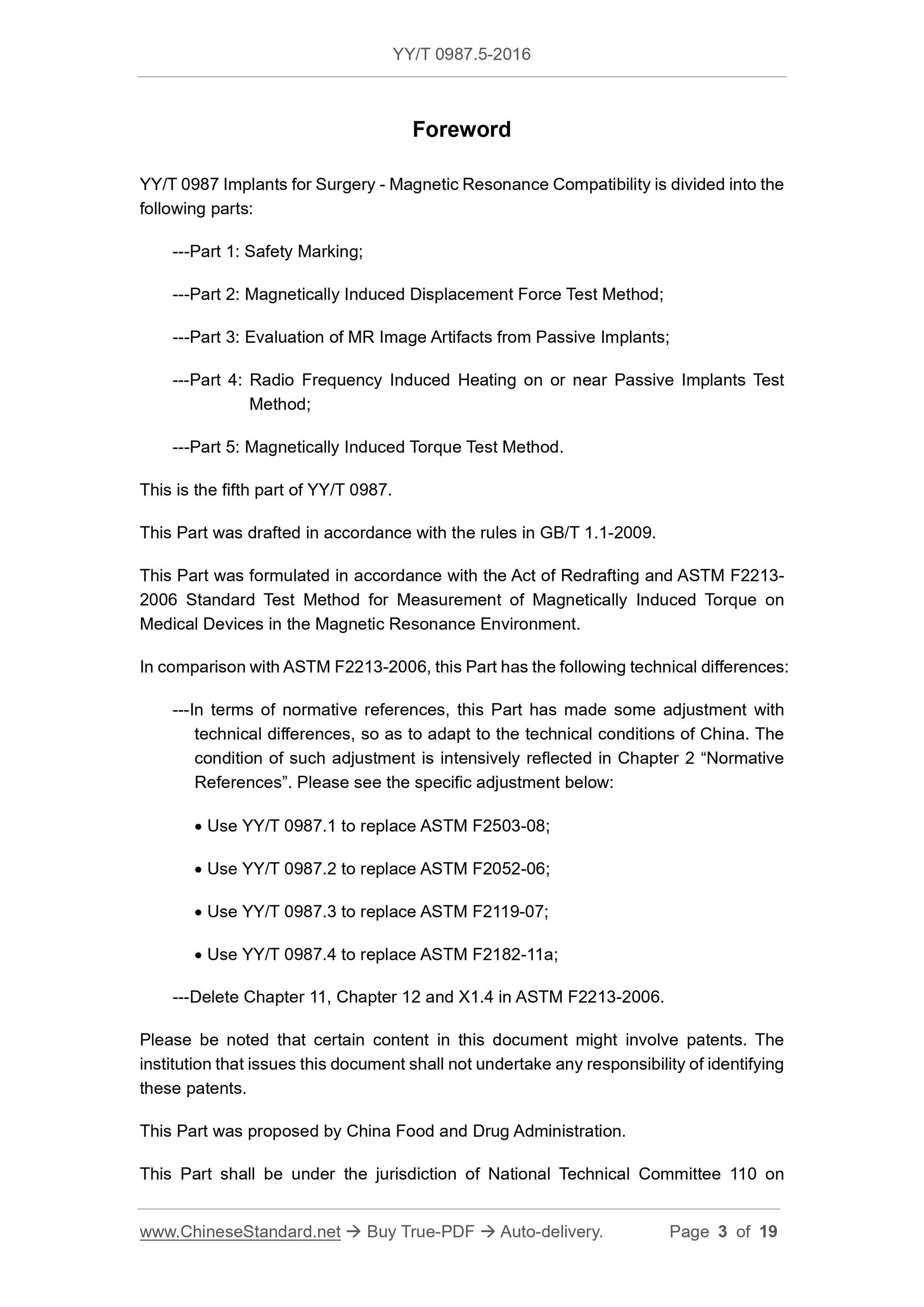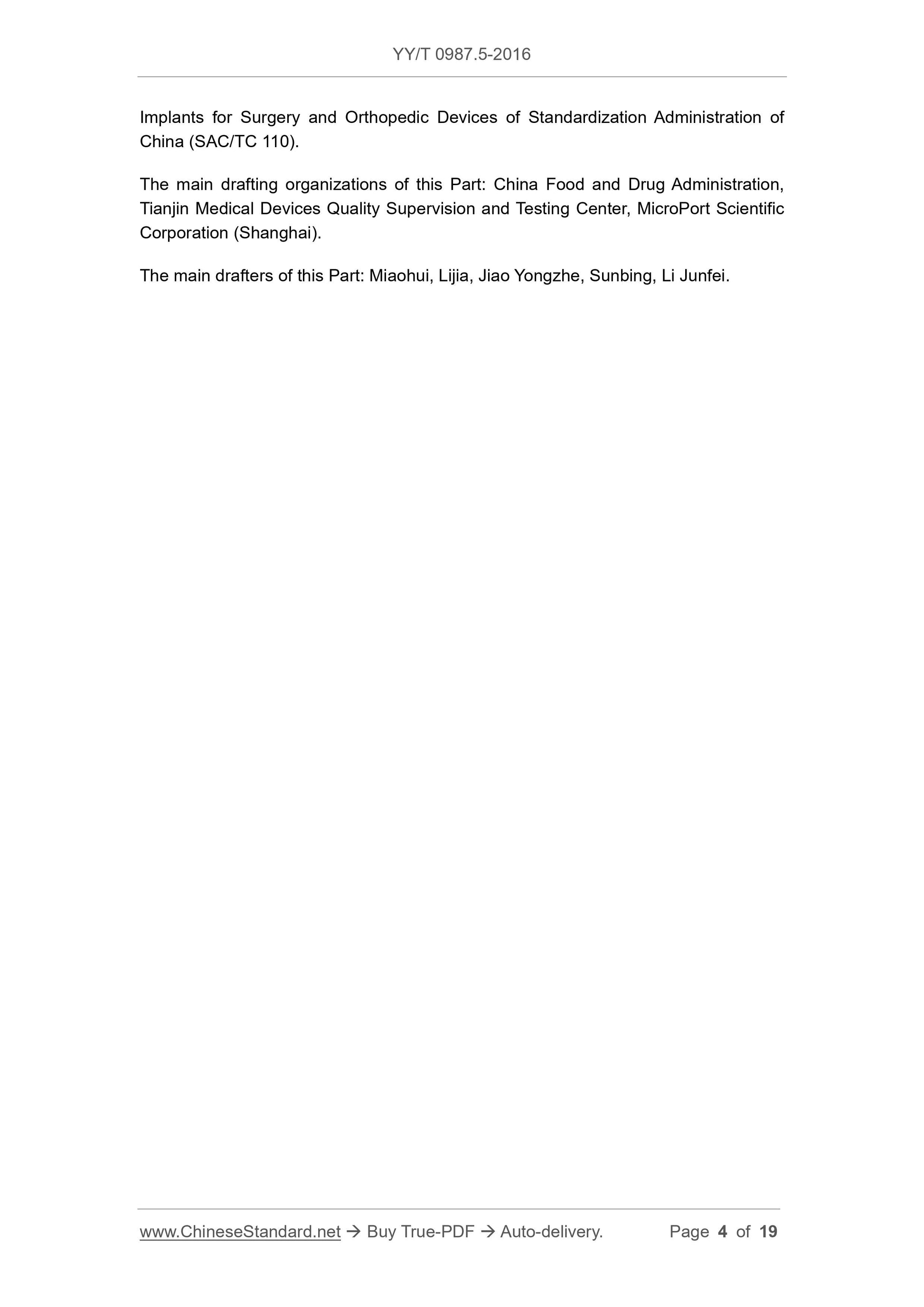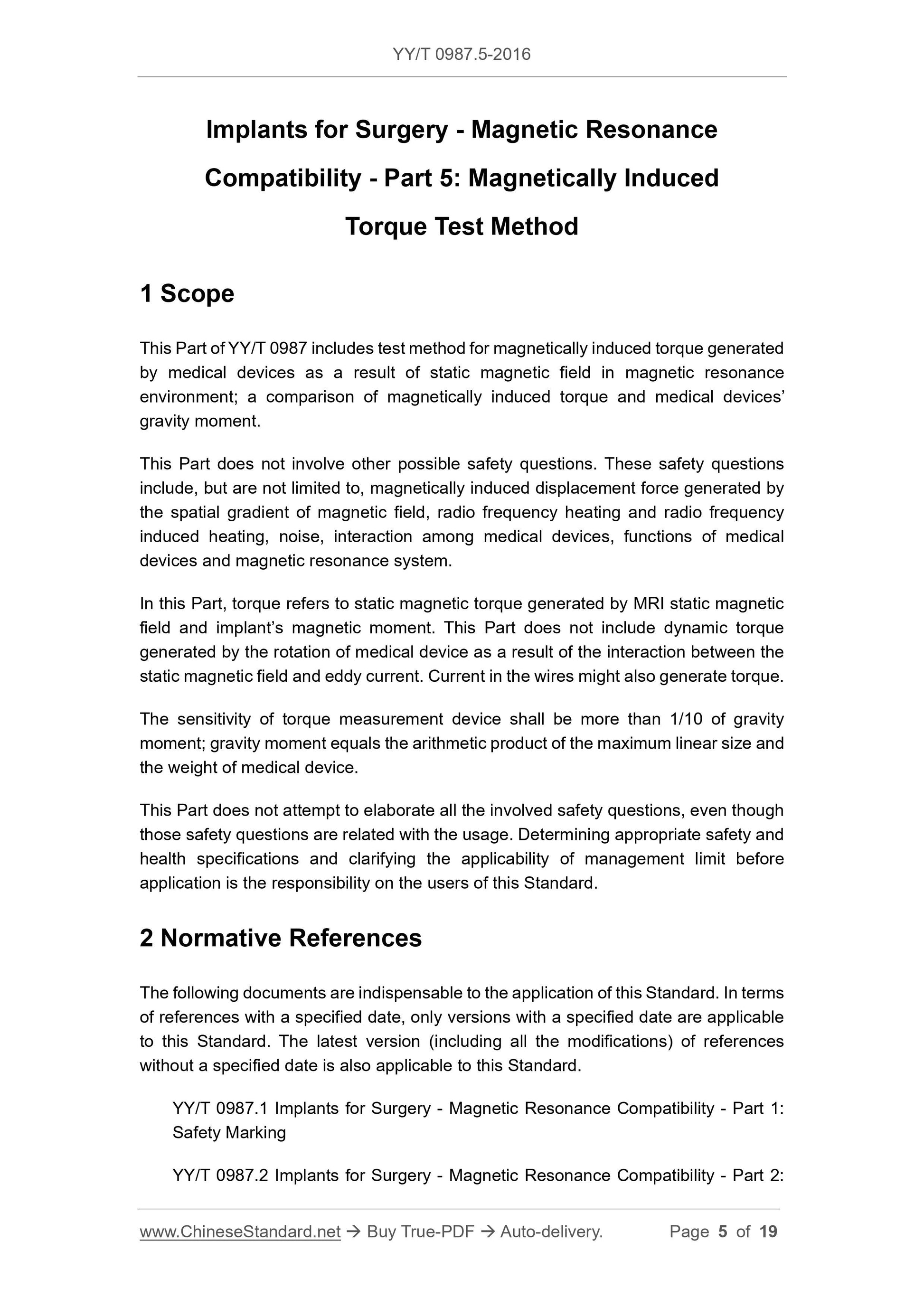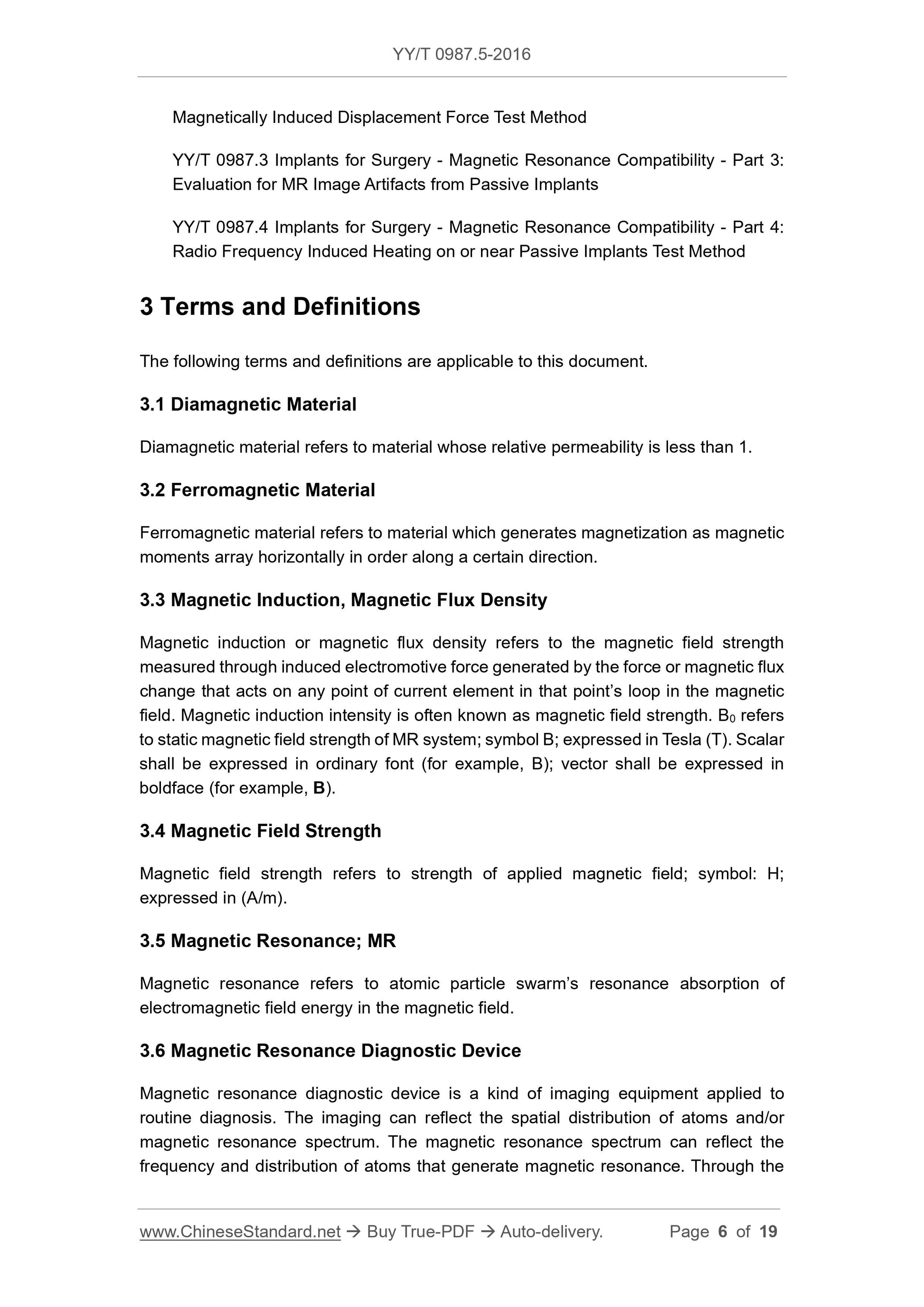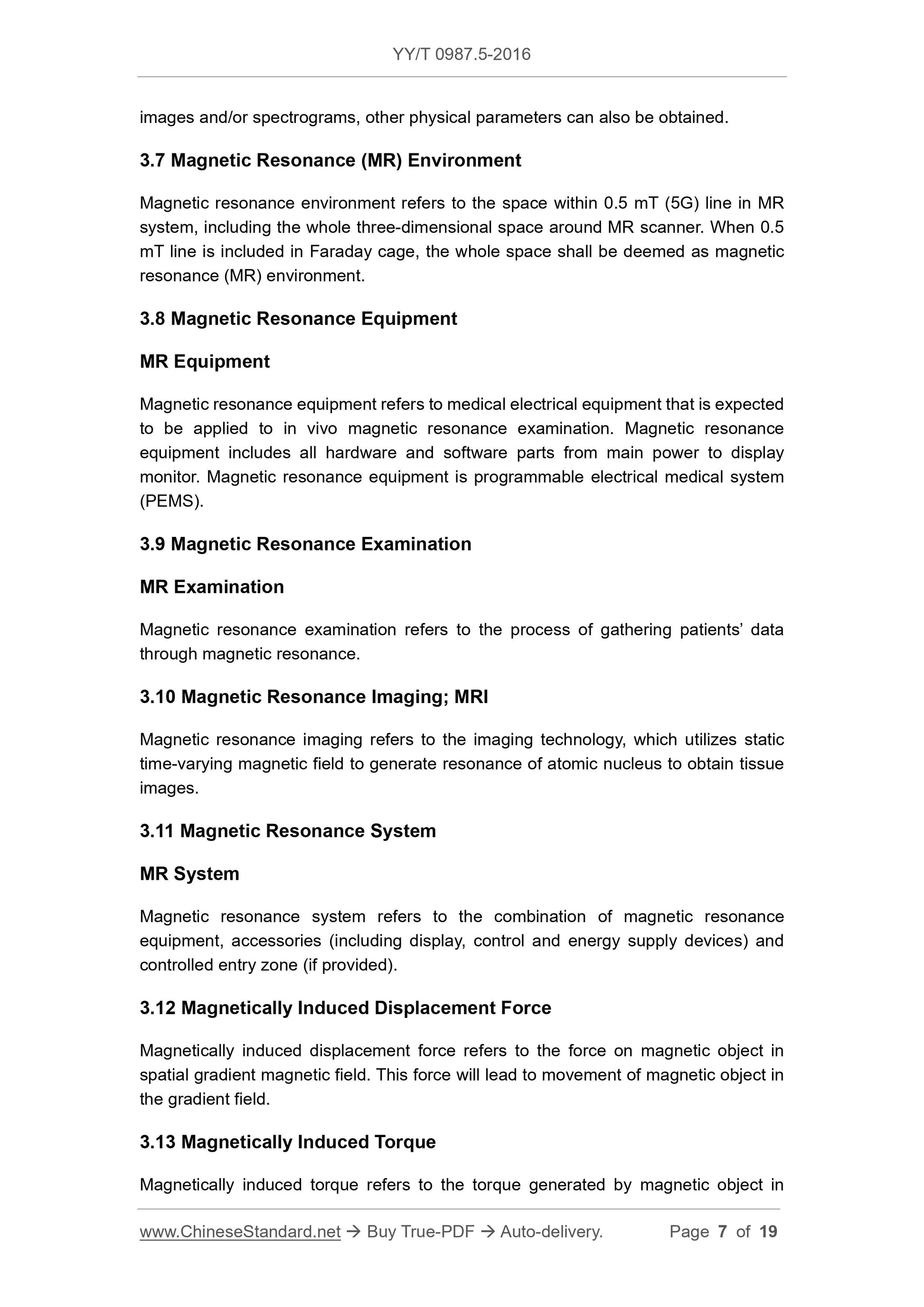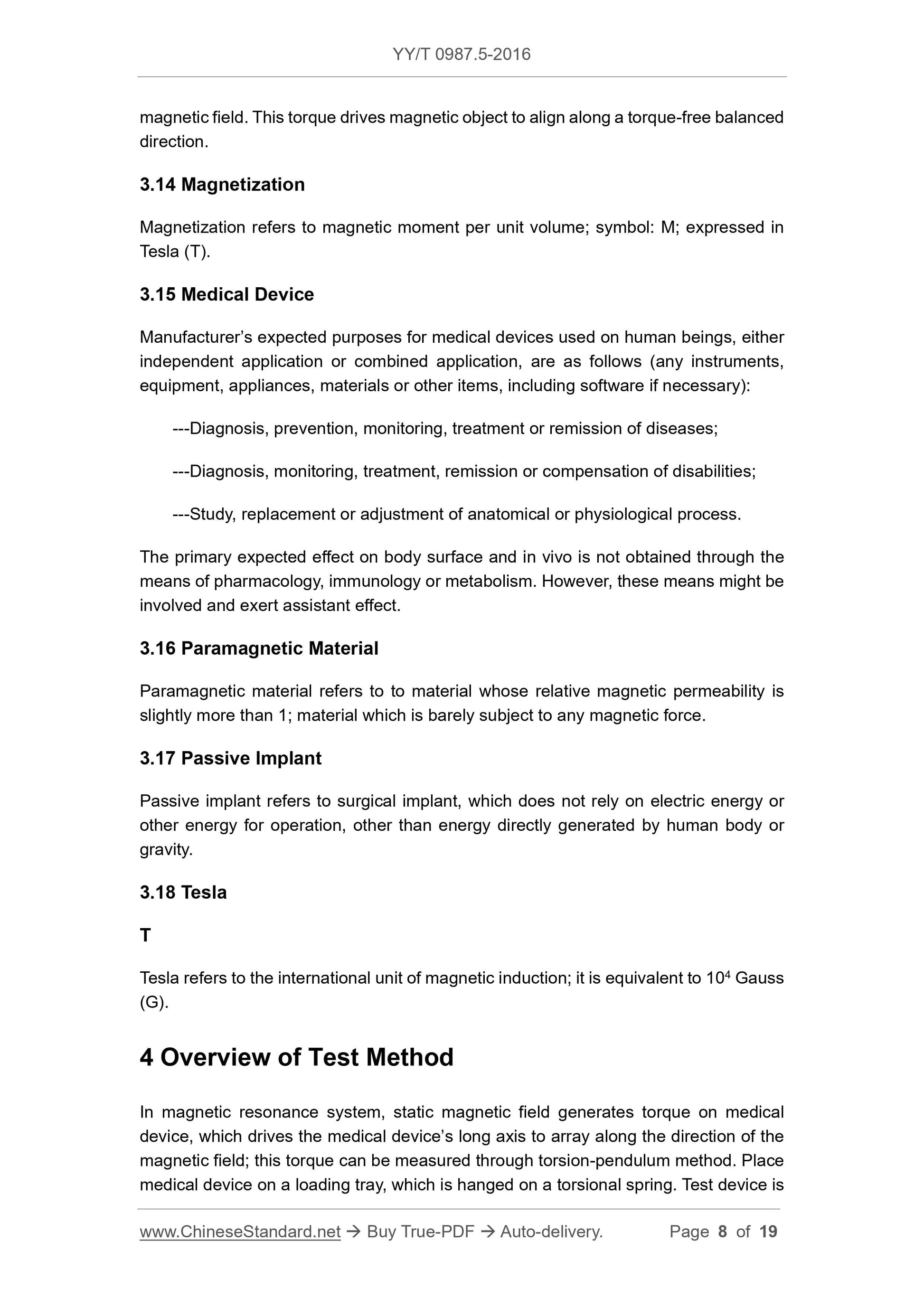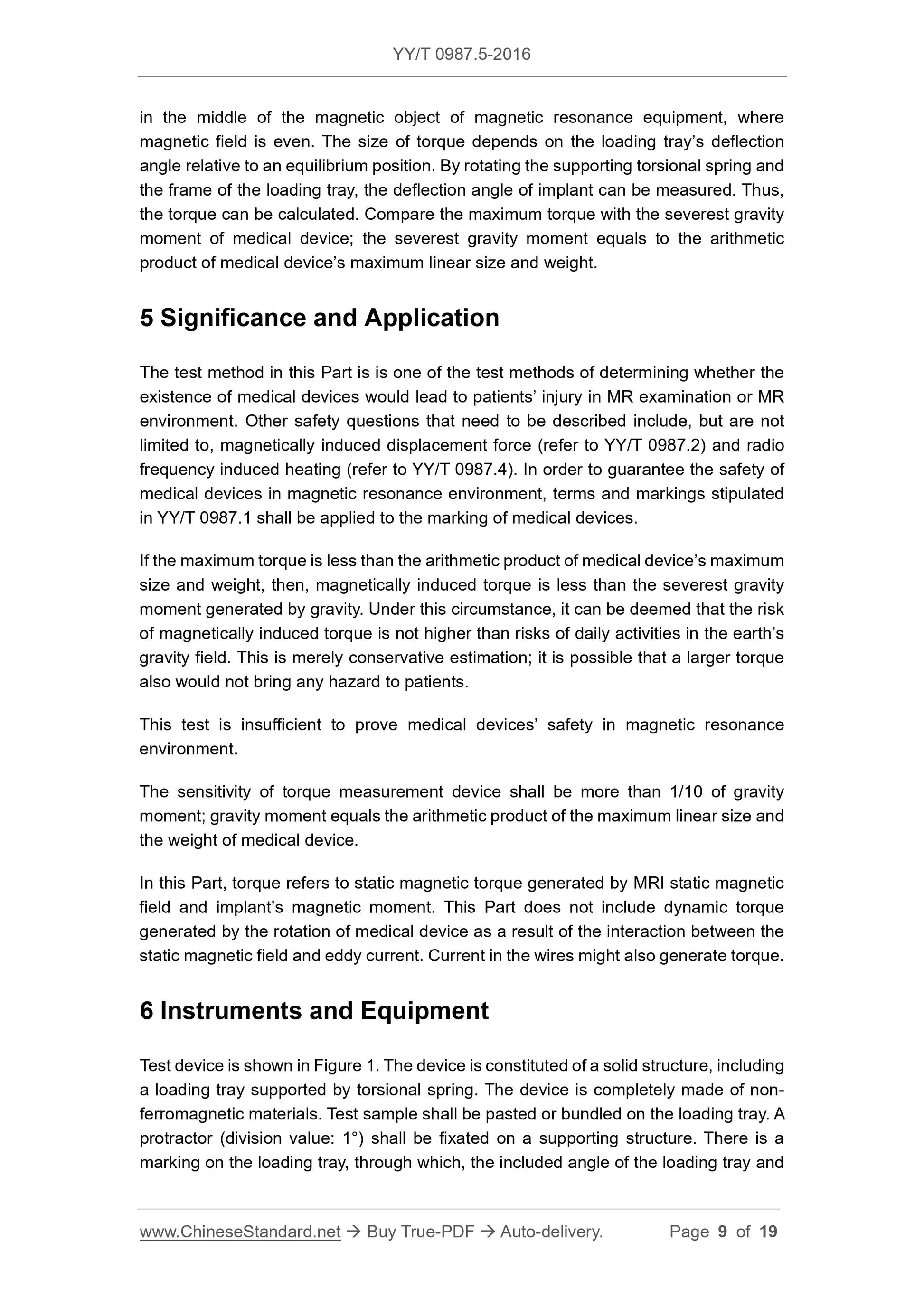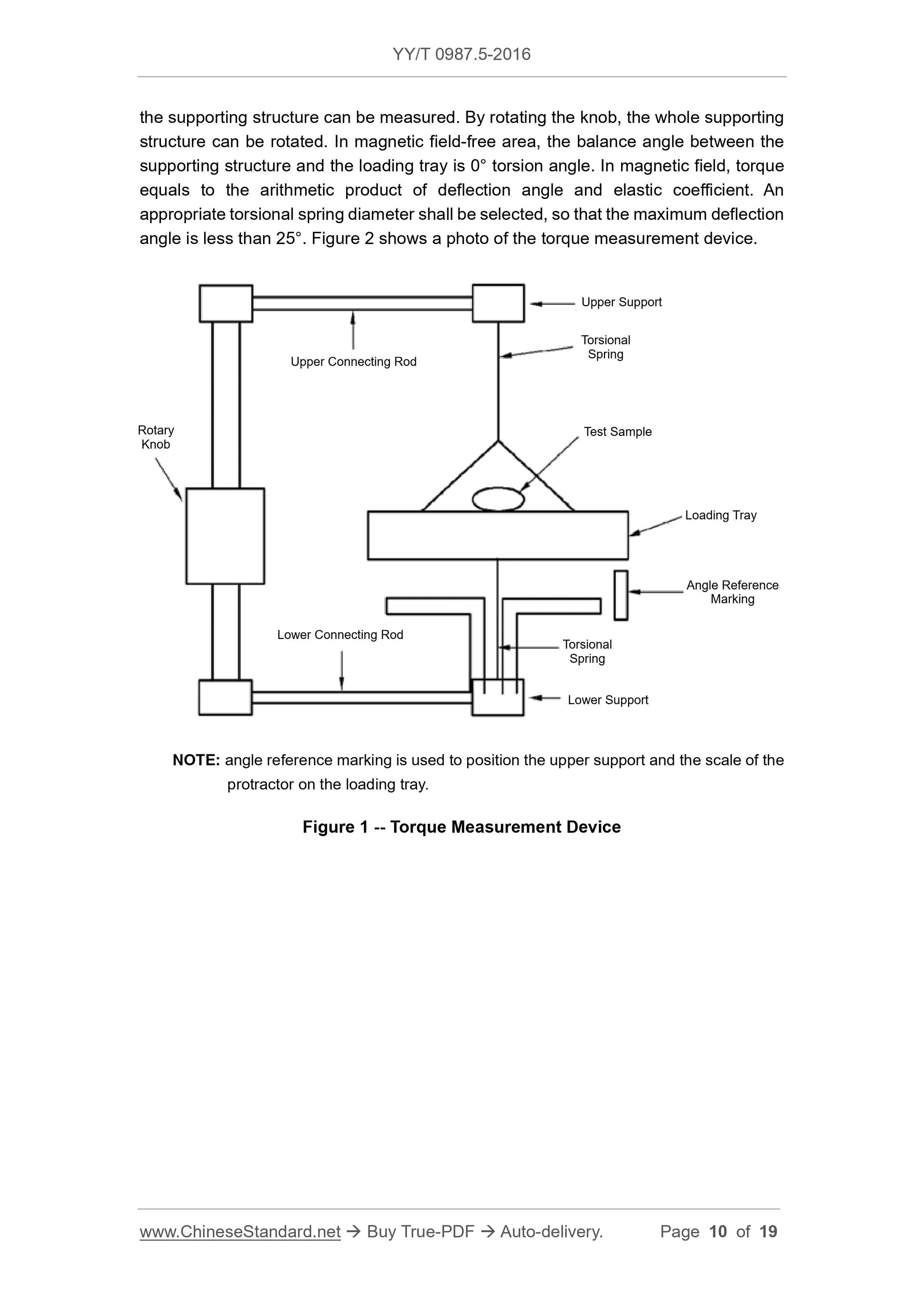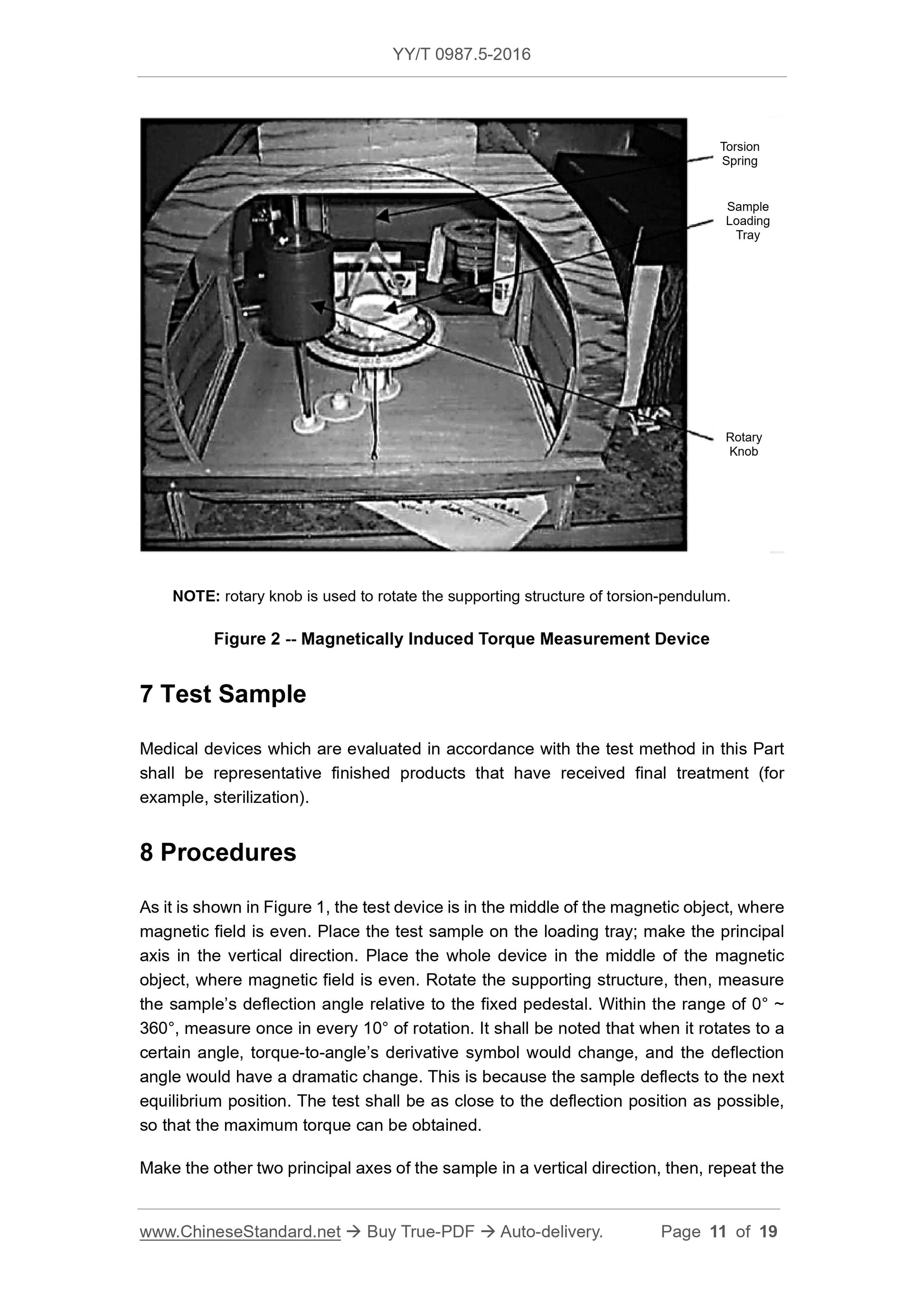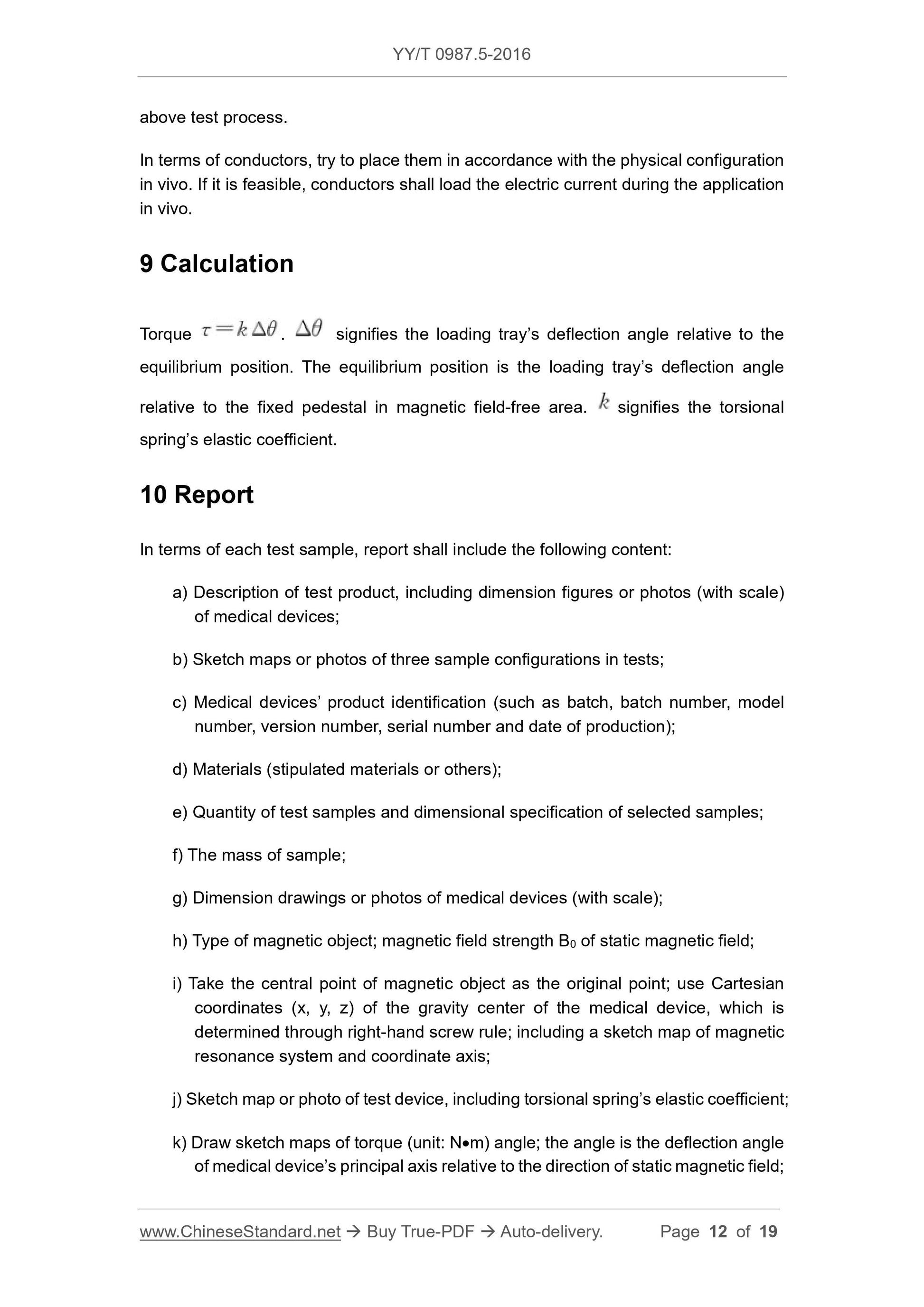1
/
of
12
www.ChineseStandard.us -- Field Test Asia Pte. Ltd.
YY/T 0987.5-2016 English PDF (YY/T0987.5-2016)
YY/T 0987.5-2016 English PDF (YY/T0987.5-2016)
Regular price
$140.00
Regular price
Sale price
$140.00
Unit price
/
per
Shipping calculated at checkout.
Couldn't load pickup availability
YY/T 0987.5-2016: Implants for Surgery - Magnetic Resonance Compatibility - Part 5: Magnetically Induced Torque Test Method
Delivery: 9 seconds. Download (and Email) true-PDF + Invoice.Get Quotation: Click YY/T 0987.5-2016 (Self-service in 1-minute)
Newer / historical versions: YY/T 0987.5-2016
Preview True-PDF
Scope
This Part of YY/T 0987 includes test method for magnetically induced torque generatedby medical devices as a result of static magnetic field in magnetic resonance
environment; a comparison of magnetically induced torque and medical devices’
gravity moment.
This Part does not involve other possible safety questions. These safety questions
include, but are not limited to, magnetically induced displacement force generated by
the spatial gradient of magnetic field, radio frequency heating and radio frequency
induced heating, noise, interaction among medical devices, functions of medical
devices and magnetic resonance system.
In this Part, torque refers to static magnetic torque generated by MRI static magnetic
field and implant’s magnetic moment. This Part does not include dynamic torque
generated by the rotation of medical device as a result of the interaction between the
static magnetic field and eddy current. Current in the wires might also generate torque.
The sensitivity of torque measurement device shall be more than 1/10 of gravity
moment; gravity moment equals the arithmetic product of the maximum linear size and
the weight of medical device.
This Part does not attempt to elaborate all the involved safety questions, even though
those safety questions are related with the usage. Determining appropriate safety and
health specifications and clarifying the applicability of management limit before
application is the responsibility on the users of this Standard.
Basic Data
| Standard ID | YY/T 0987.5-2016 (YY/T0987.5-2016) |
| Description (Translated English) | Implants for Surgery - Magnetic Resonance Compatibility - Part 5: Magnetically Induced Torque Test Method |
| Sector / Industry | Medical Device and Pharmaceutical Industry Standard (Recommended) |
| Classification of Chinese Standard | C35 |
| Classification of International Standard | 11.040.40 |
| Word Count Estimation | 12,112 |
| Date of Issue | 2016-03-23 |
| Date of Implementation | 2017-01-01 |
| Regulation (derived from) | Notice of the General Administration of Food and Drug Administration (No. 74 of 2016) |
| Issuing agency(ies) | State Food and Drug Administration |
Share
